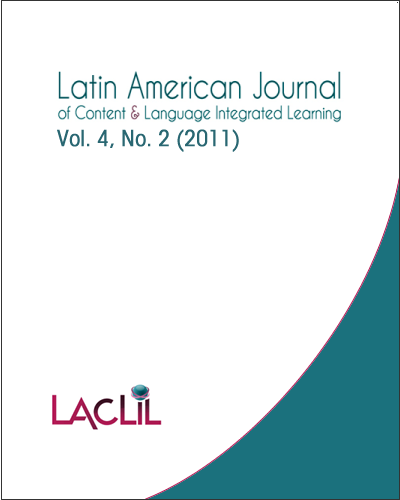First Steps in CLIL: Training the Teachers
DOI:
https://doi.org/10.5294/laclil.2011.4.2.1Resumen
As David Graddol’s “World English Project” gains momentum (Graddol, 2006), CLIL is increasingly being taken up by Ministries of Education as an innovative approach to teaching modern languages, as a motivating method for teaching subject areas, or simply as a contribution to internationalisation and the ideal of multilingualism. With this exponential growth, the lack of competent, trained CLIL teachers has become more evident. Content teachers are not infrequently monolingual and may not recognize the benefits of becoming bilingual, while language teachers may not feel proficient in the subject-area knowledge required for content teaching. Education ministries insist on CLIL implementation, but do not oversee a workforce sufficiently competent in all three necessary areas: target language ability, subject knowledge, and CLIL methodology. This paper explores the need to design quality training modules at ITT (Initial Teacher Training) colleges, for PGCSE (Postgraduate Certificate in Education) courses at universities, and INSET (In-Service Education and Training) courses so that teachers to feel confident in embarking on CLIL courses at primary, secondary, and tertiary levels.
Descargas
Descargas
Publicado
Cómo citar
Número
Sección
Licencia
Los autores que publican en esta revista están de acuerdo con los siguientes términos:
Esta revista y sus artículos se publican bajo la licencia Creative Commons Atribución-NoComercial-SinDerivadas 4.0 Internacional (CC BY-NC-ND 4.0), por lo cual el usuario es libre de: compartir, copiar y redistribuir el material en cualquier medio o formato, siempre y cuando: dé crédito de manera adecuada, brinde un enlace a la licencia e indique si se han realizado cambios; no use nuestro contenido con propósitos comerciales; y/o remezcle o transforme el material. Recuerde que no tiene los permisos para distribuir el material si fue modificado.








